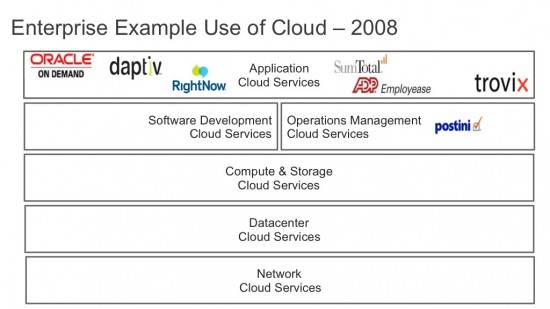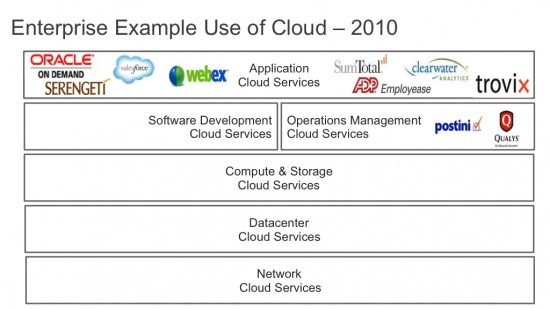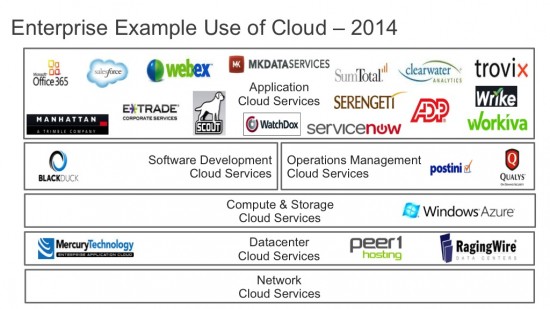People often ask me: “Is cloud computing really being adopted?”
Over the years, I’ve talked to large and small companies to find out the state of the art in their particular businesses. There is much more in both the recently released Cloud Computing: Operation Efficiency and Cloud Computing: Transformation books, but I’ll give you one example here.
Based in Silicon Valley, this company’s revenue in 2014 was approximately $300 million.
In 2008, I spoke to this company’s CIO and he shared with me that the cloud services in use were predominately application cloud services, in particular: Oracle On-demand, RightNow (later purchased by Oracle), ADP, and Trovix. In addition, the company was using an operations management cloud service Postini for spam filtering security management.
By 2010, the company had added a few other application cloud services, such as WebEx, Salesforce, and SumTotal. The company also deployed an application called Serengeti, which is a specialized piece of software for the legal side of the business. Finally, the company deployed another operations management cloud service from Qualsys.
By 2014, there was considerably more movement into the adoption of cloud services. For instance, you see here a lot of additional application cloud services including Office 365 and Workiva. The company also started using BlackDuck for software development cloud services.
You can also see the company began to use compute and storage cloud services from Windows Azure, as well as two data center cloud services provided by Peer 1 Hosting and RagingWire.
The trends you see in this particular case are similar to other companies, even much larger ones.
First: there is a continued expansion of usage of all cloud services.
Second: unlike the move to client-server computing, adoption here has started at the application level first. In other words, enterprise adoption of cloud services has begun by subscribing to independent software vendor (ISV) business applications delivered in either model four, five or six.
What remains is increasing adoption of compute, storage, software development and operations management cloud services. We’re still very early days, but if the trend I’ve seen over the past six years is any indication, by 2021 the picture will be dramatically different as the adoption of cloud services continues to increase.
For more information
For other examples and information of companies adopting cloud computing:
- Check out my book Cloud Computing: Operation Efficiency, where State of the Cloud is discussed in more detail in a TED-sized chapter.
- Read my prior blog on Seven Software Business Models – Part 2.
- Watch out for my next blog, coming out Monday, March 16.



Very informative, thanks for sharing!
Timothy,
Great info and insight! Thanks for continuing to share the latest and greatest on how rapidly the Cloud landscape is changing!
I’m curious how much of this the IT shop is aware of.
Mark
I continue to believe the single biggest impediment to adoption is education. To this day many dollars are being spent the old school way for on premises software and hardware.